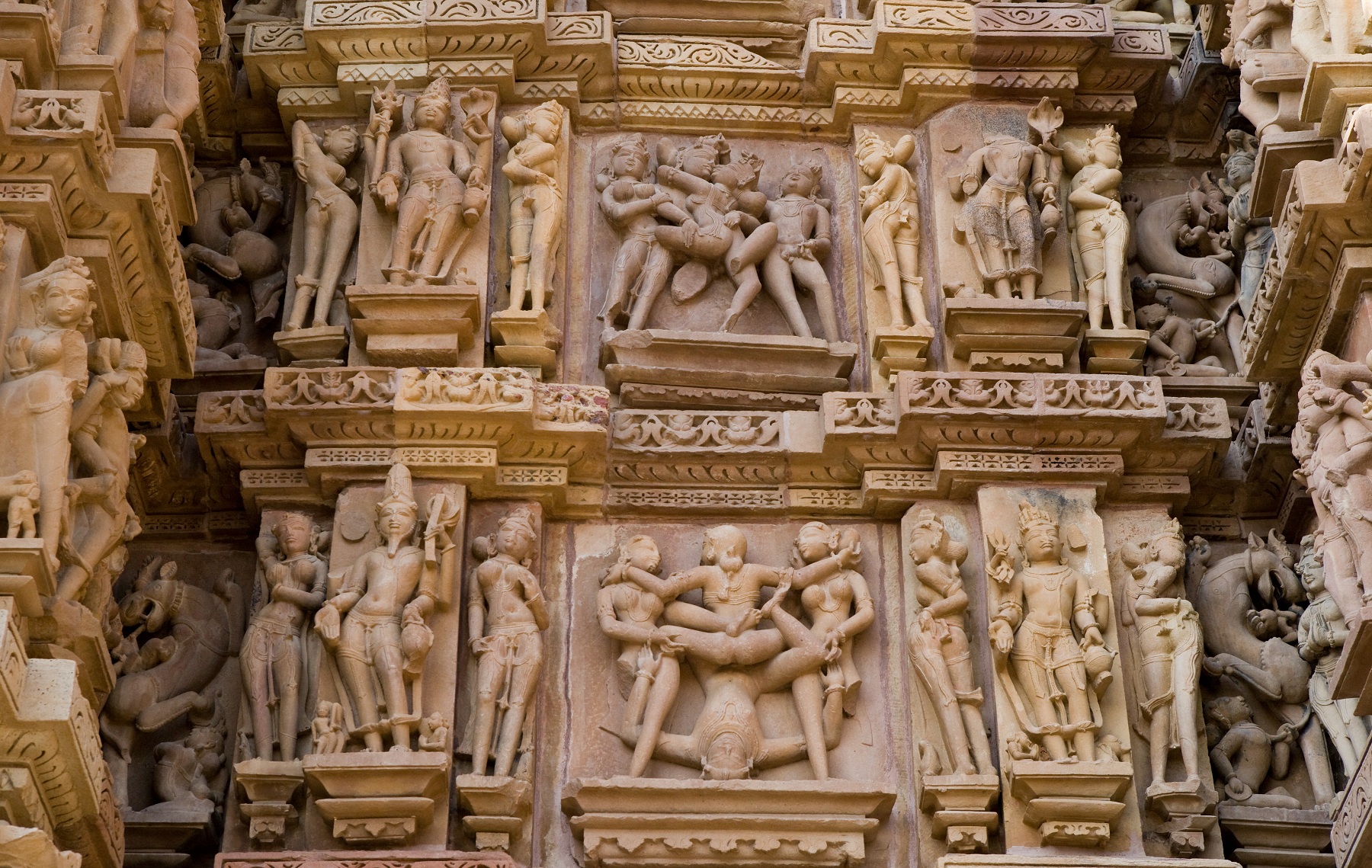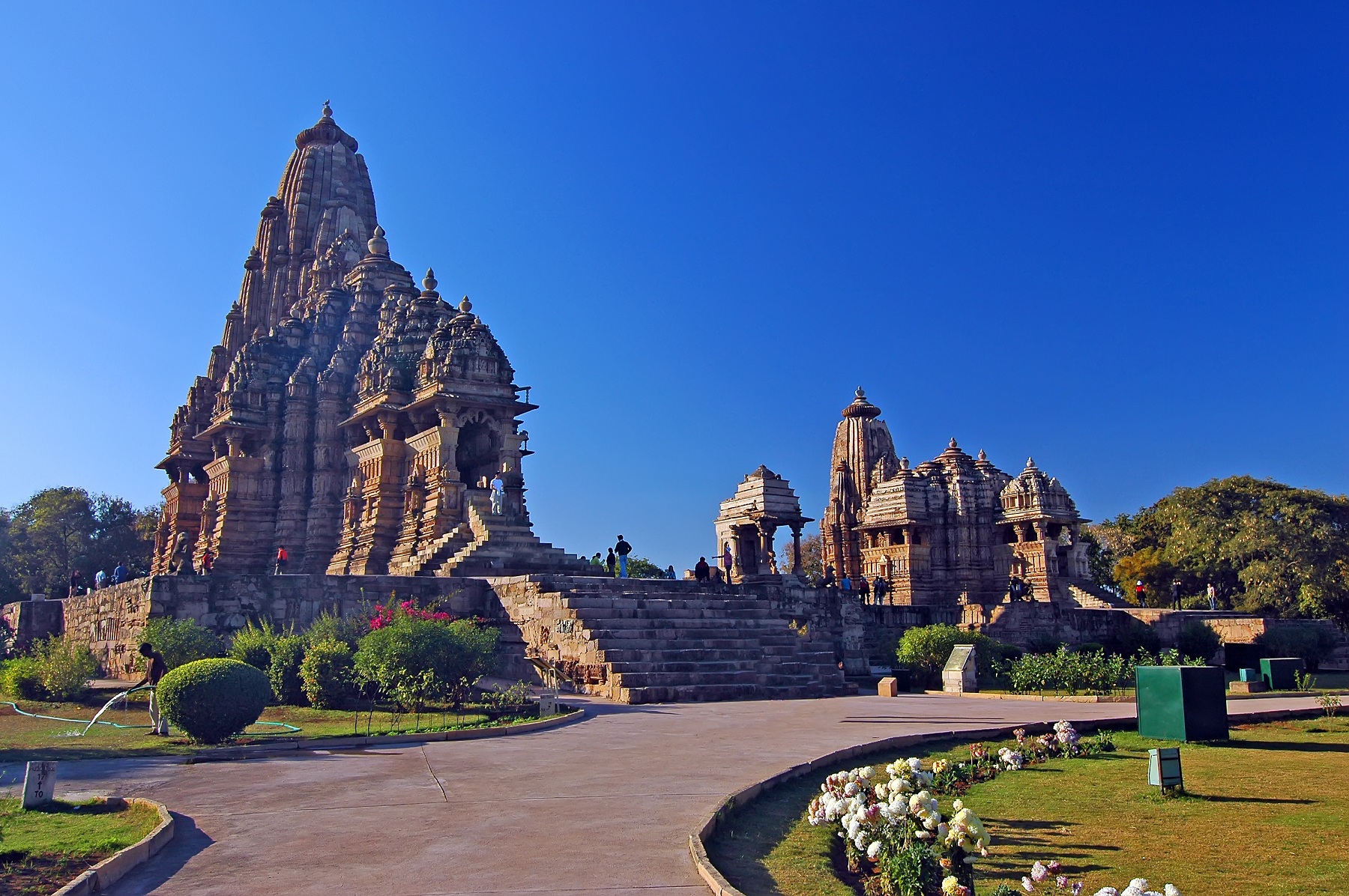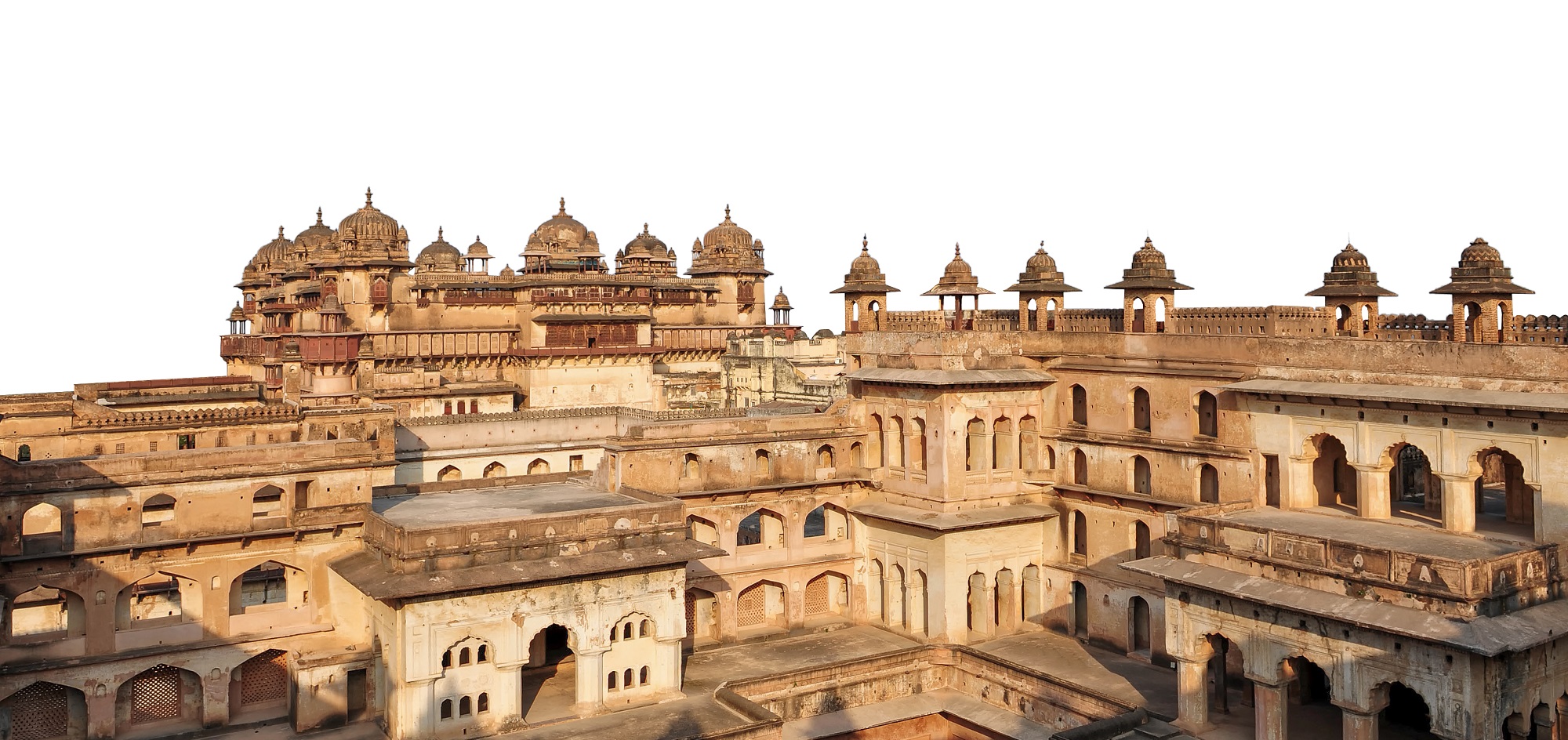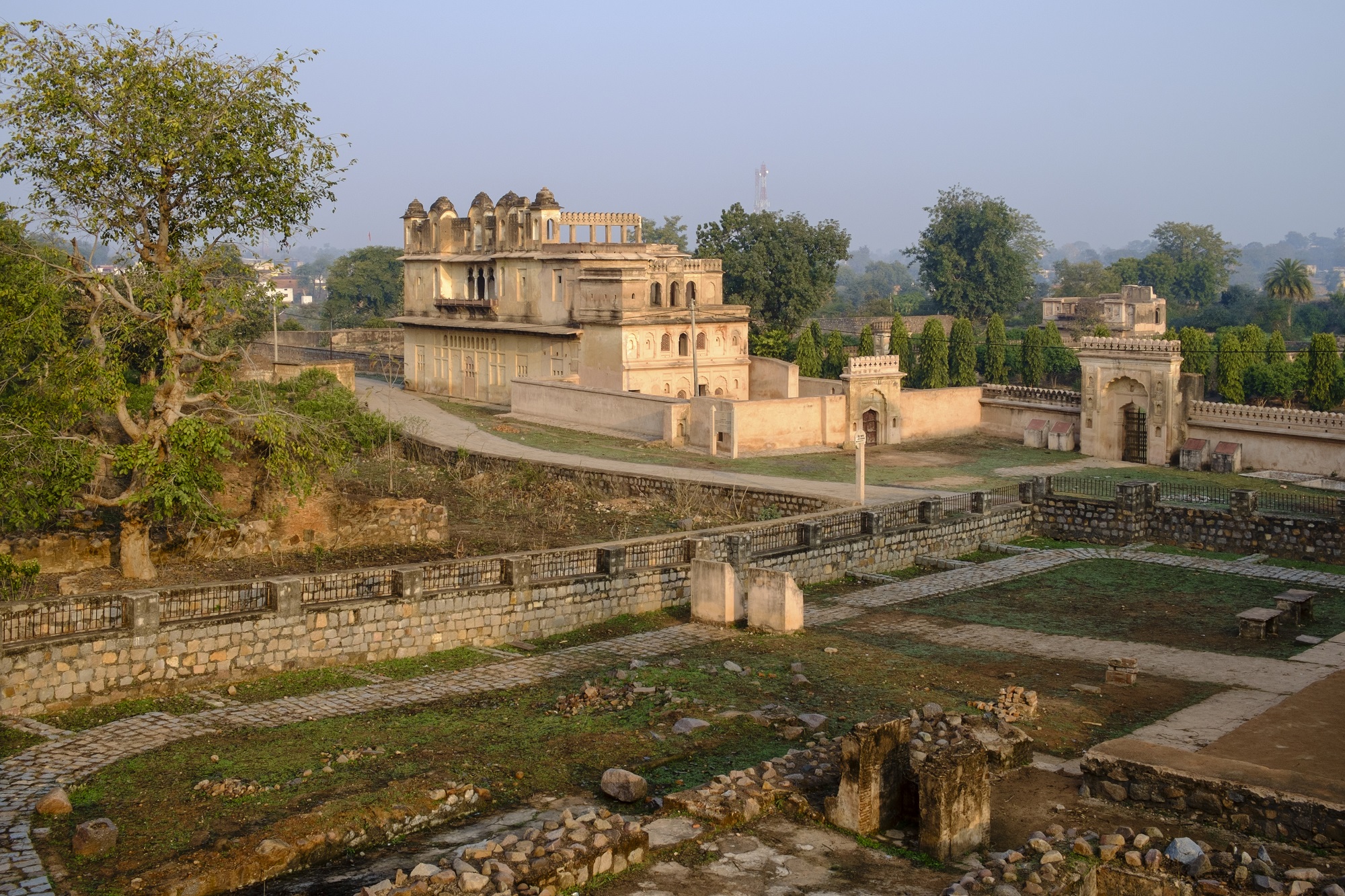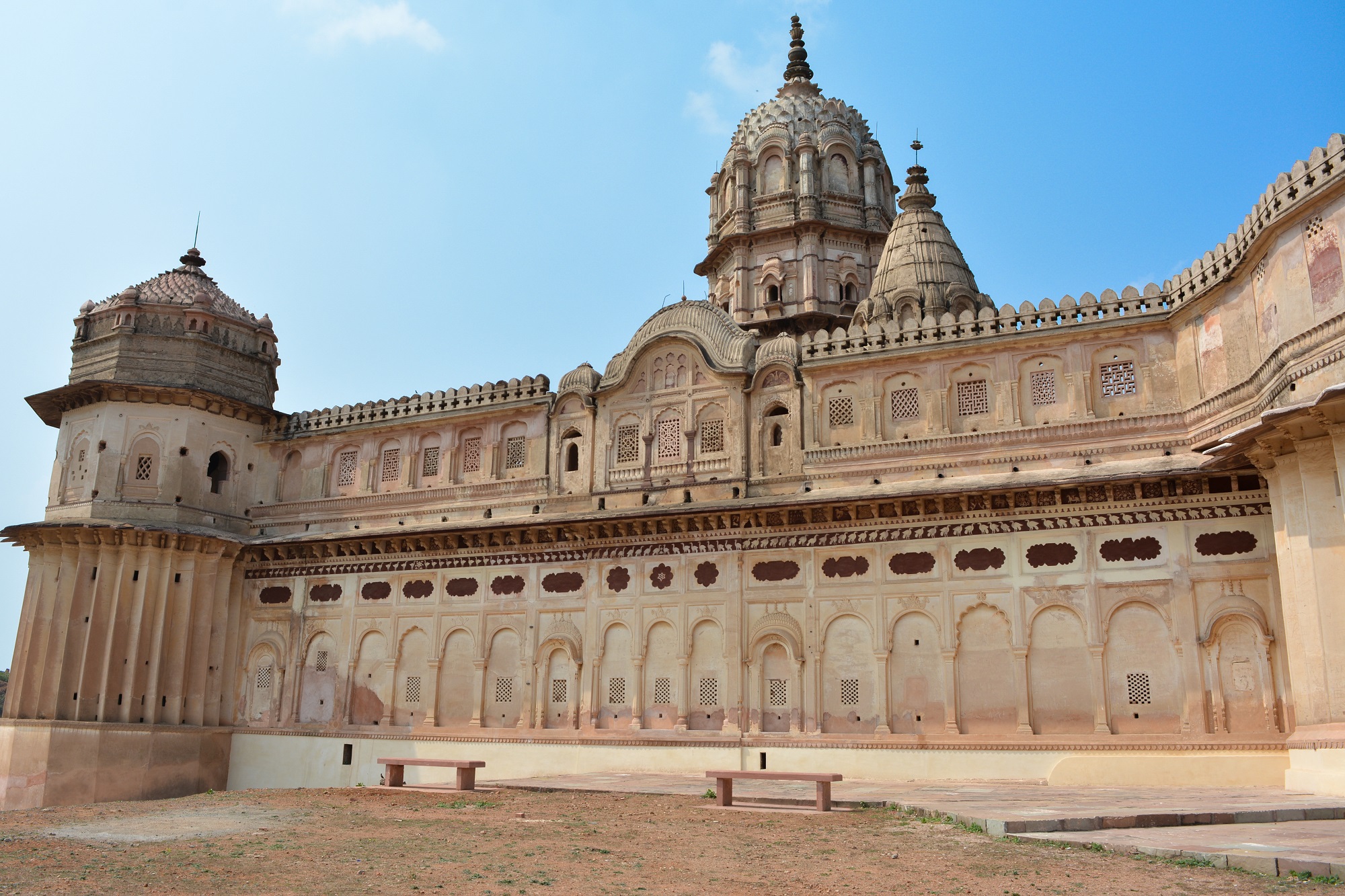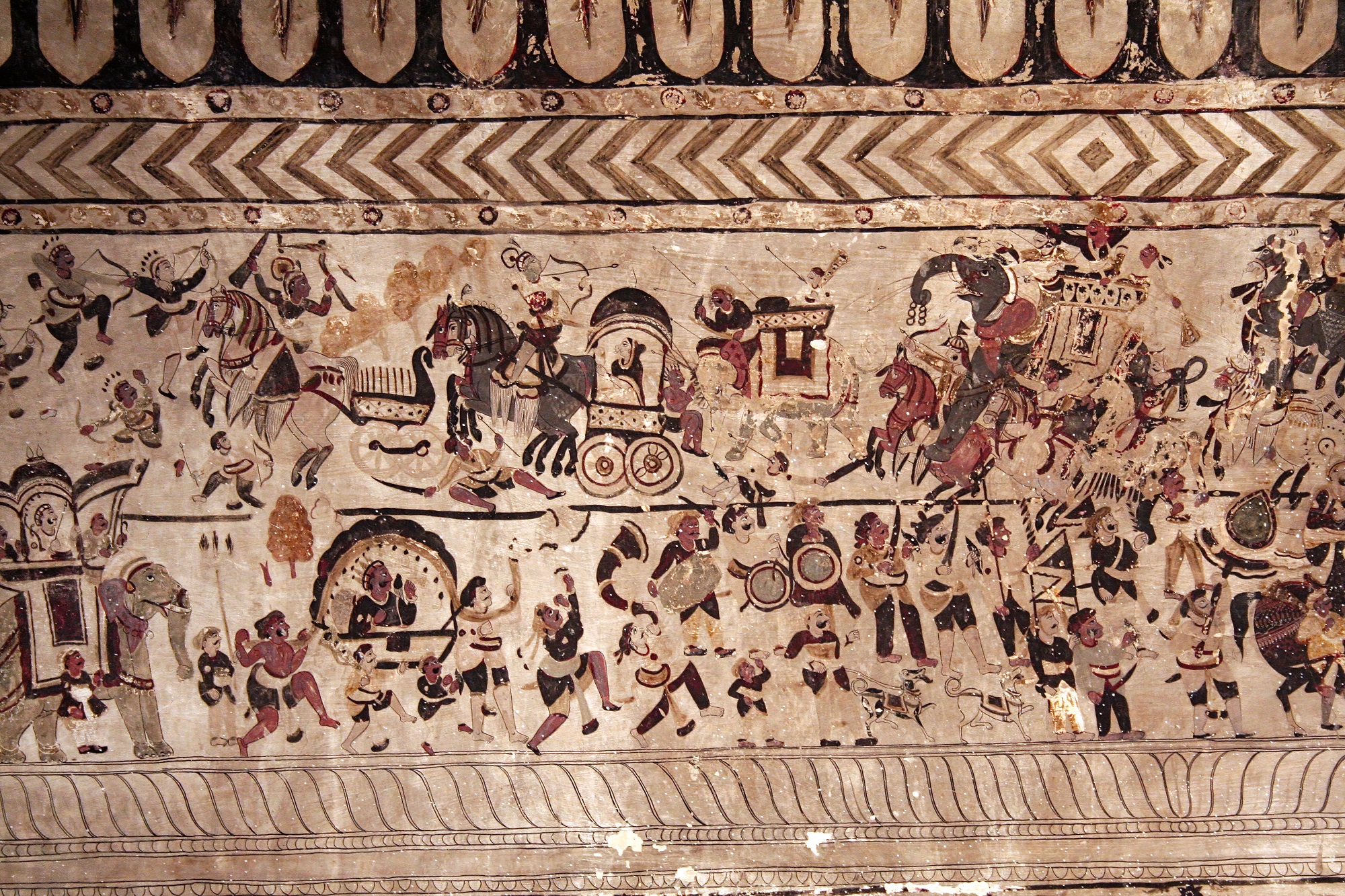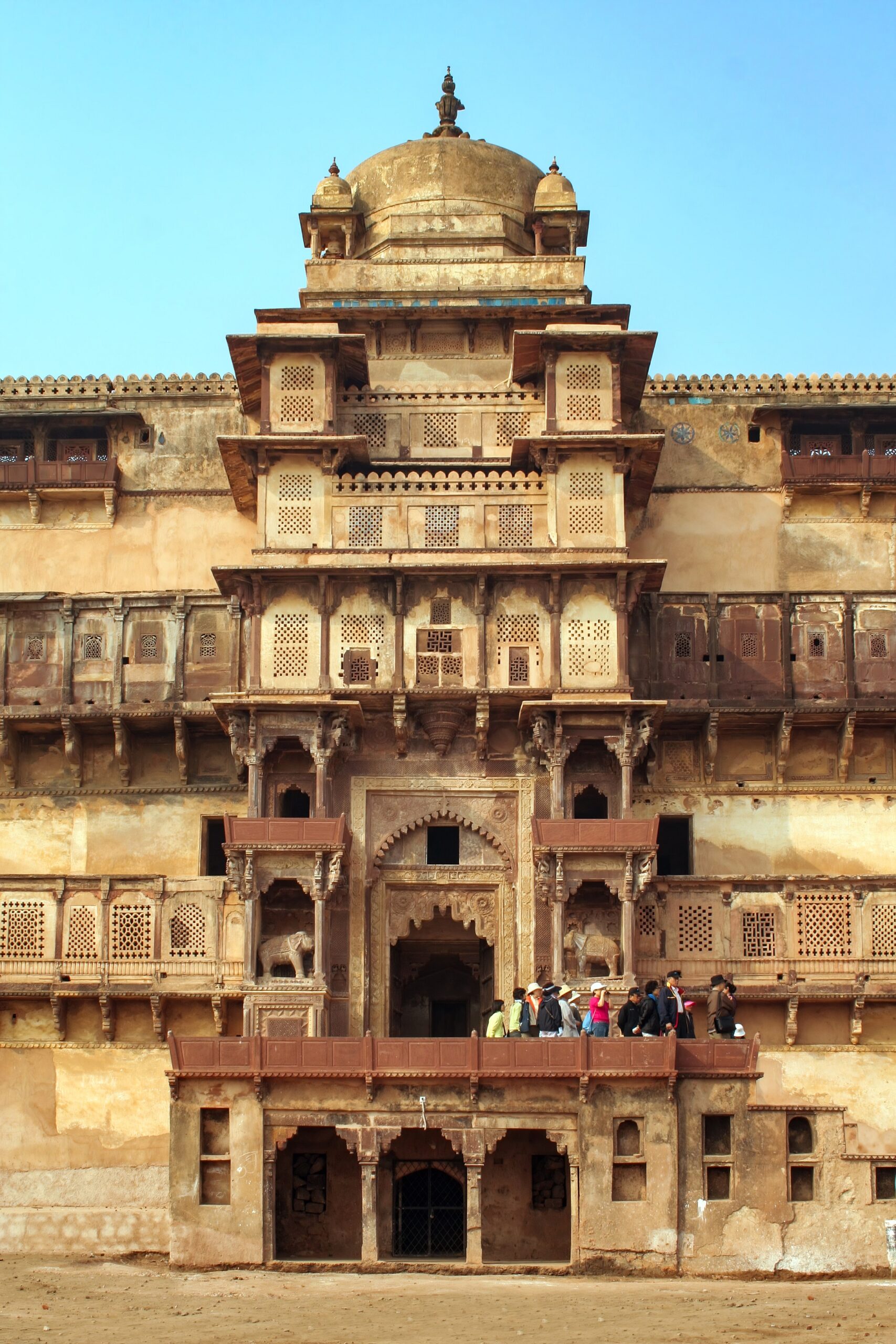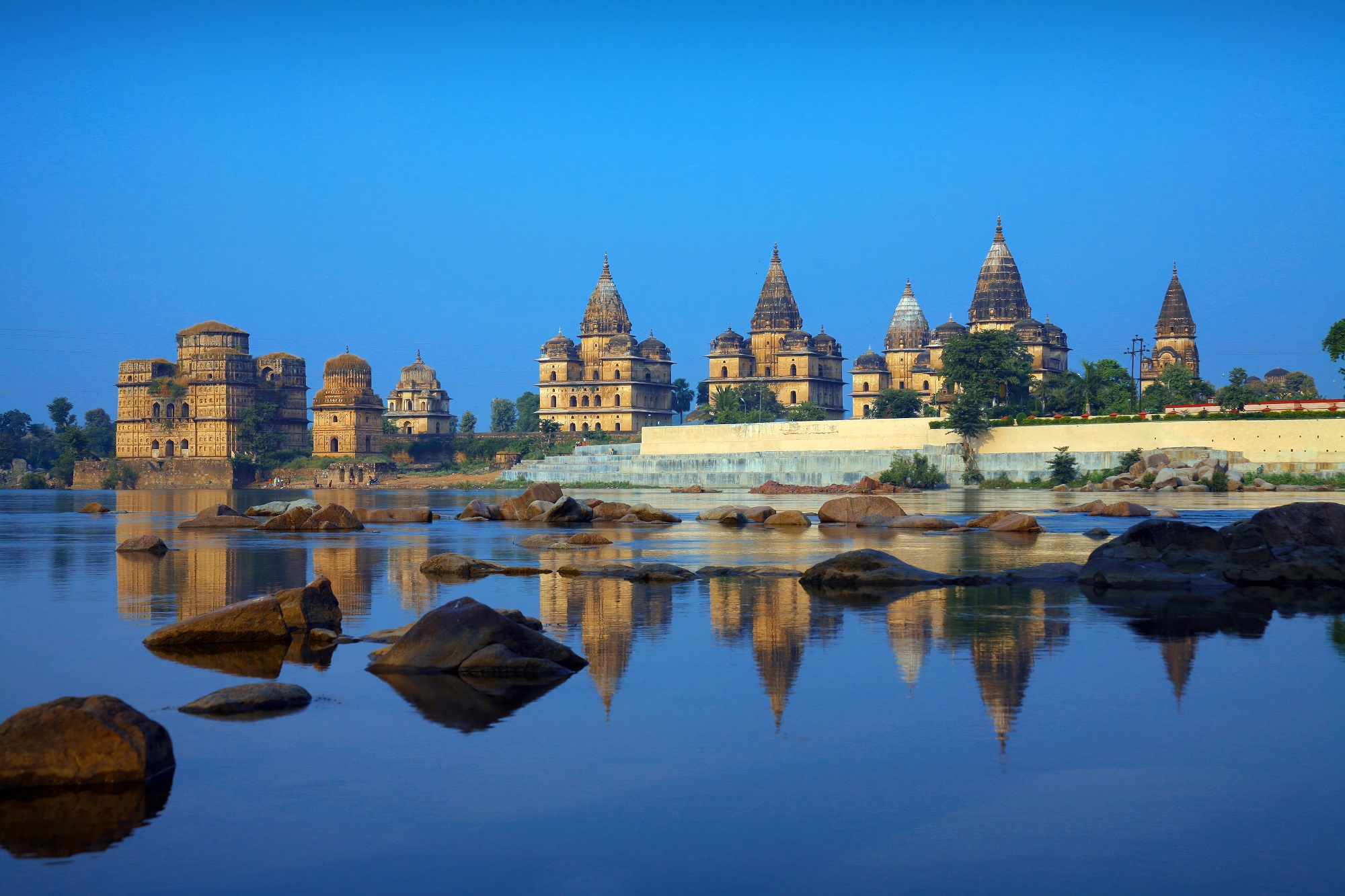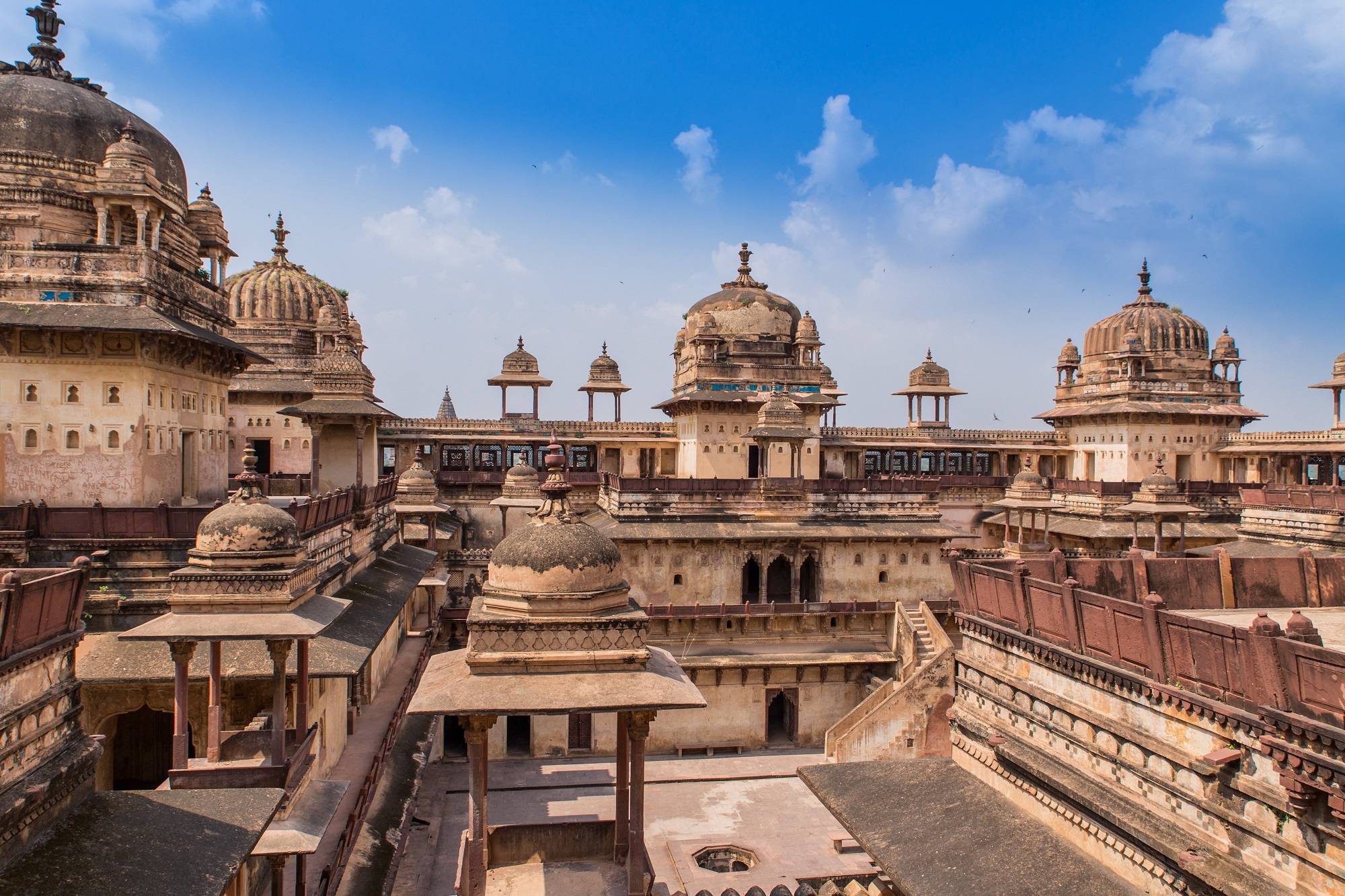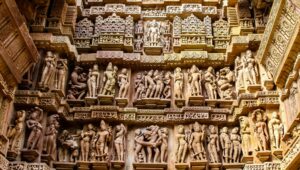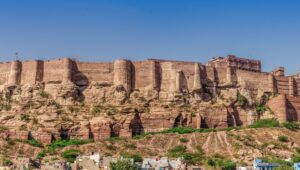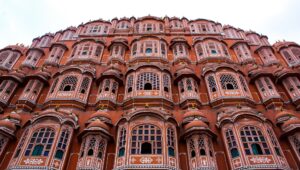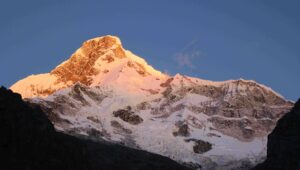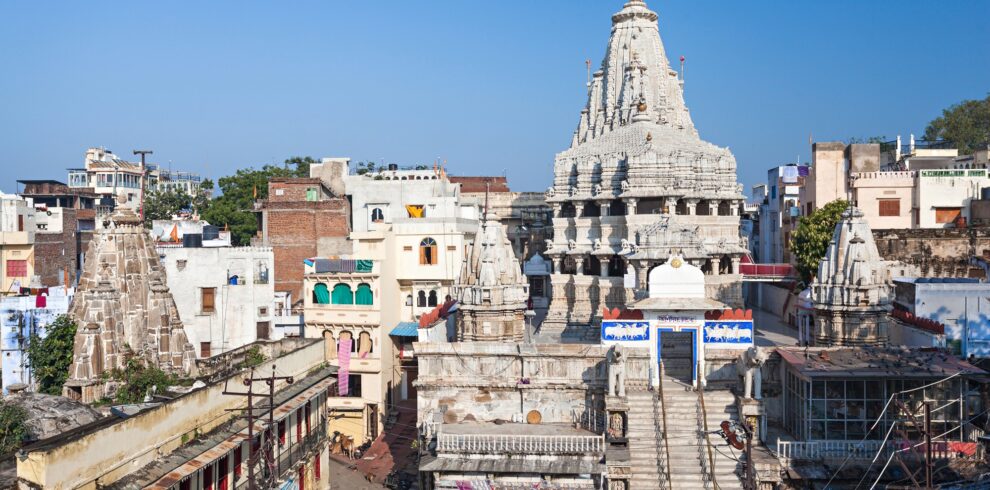Overview
Embark on this tour to the Golden Triangle cities- Delhi, Agra and Jaipur along with Varanasi, Orchha and Khajuraho. Attend the holy Ganga Aarti and worship at the temples of Varanasi. See Jama Masjid in Delhi, visit the Taj Mahal in Agra, and explore Hawa Mahal in Jaipur. Pay respects at the famous Brahma, Javari and Vamana temples in Khajuraho and admire the Rajput-Mughal blended architecture in Orchha.
Highlights
- Explore Red Fort, Jama Masjid, Chandni Chowk and India Gate
- Take in the majestic beauty of the Taj Mahal and the Agra Fort
- Visit City Palace, Jantar Mantar & Hawa Mahal in Jaipur
- See the ecstatic Fatehpur Sikri town
- Marvel at the architecture and Rajputana culture of Orchha
- Attend the sacred Ganga Aarti at Varanasi
- Offer your prayers at the Sarnath temple
- Enjoy a boat cruising along the banks of the River Ganges
- Seek blessings at the famous temples of Khajuraho
Itinerary
Day 1 :
Arrival in Delhi
Meet our representative at a pre-decided location in Delhi.
Get transferred to your pre-booked hotel, complete the check-in formalities and relax for the same hours.
After that go to Chandni Chowk, Take a cycle Rickshaw ride in Chandni chowk & Khari Baoli Spice Market, a busy shopping area with markets full of spices, dried fruit, silver jewellery, and vivid saris, while the narrow side streets are crowded with tiny shops selling essential oils, stationery, and traditional Indian sweets.
Day 2 :
Delhi
Visit the Red Fort, constructed by Shah Jahan in 1638 when the capital shifted from Agra to Delhi; it was the primary residence of the Mughal Dynasty and is located in the city centre. It is made from red sandstone, and that is where it gets its name from. The Red Fort has been a UNESCO World Heritage Site since 2007.
Travel to Qutub Minar, a unique five-story tapering tower with a height of 73 meters. This famous historical monument is also a UNESCO World Heritage Site.
Look at the India Gate, a war memorial near the Rajpath. It is dedicated to the soldiers of British India who died in the war.
Check out Raj Ghat, A memorial dedicated to Mahatama Gandhi; it is a black stone platform in an open-air complex that marks Gandhi's cremated spot.
Pay your respects at Jama Masjid, One of the largest mosques in the country. Jama Masjid is made up of red sandstone and marble. It was constructed by Shah Jahan and is visited by hundreds of people every day.
Go Head to Humayun's tomb, The tomb of the Mughal Emperor Humayun. The tomb was commissioned by Humayun's first wife and chief consort, Empress Bega Begum, in 1558 and designed by Mirak Mirza Ghiyas and his son, Sayyid Muhammad, Persian architects who she chose.
Day 3 :
Delhi To Jaipur (270 KM/5 Hrs)
Post breakfast and check out, drive to the beautiful city of Jaipur, also known as the Pink City of India.
Upon arrival, check in at the hotel. Jaipur is known as the Pink City of India due to the extensive use of pink sandstone in various city buildings. Its monuments showcase a myriad of architectural styles, and its vibrant bazaars are famous for traditional handicrafts and jewellery. The ambience of this city speaks volumes of the rich lifestyle of the Rajput Kings.
Shop at the Johari Bazaar, a shopper's paradise and a must-visit in Jaipur. This market of exquisite jewellery and artefacts can immerse shoppers in its glittering glory. It is considered to be one of the oldest markets in Jaipur City.
Day 4 :
Jaipur
Visit Amer Fort, Situated on the top of a hill, was built by Raja Man Singh I. It is known for its artistic elements and unique architecture. The Maota Lake located in front of the monument acts as a source of water for the fort.
Spend time at the City Palace and learn about its history. It was originally the administrative and ceremonial seat of the Maharaja of Jaipur, constructed in 1721. It was also the location of religious and cultural events that took place at that time. It now houses the Maharaja Sawai Man Singh II Museum and continues to be the home of the Jaipur royal family.
Check out the Hawa Mahal, Also known as The Palace of Winds, which is made with red and pink sandstone, distinguishing it from the surroundings. The palace is a five-storey pyramidal-shaped monument and was built by Sawai Pratap Singh in 1799.
Explore the Jantar Mantar, A UNESCO World Heritage site built in 1734. It is a collection of nineteen astronomical instruments built by Rajput king Sawai Jai Singh II, the founder of Jaipur. The instruments allow the observation of astronomical positions with the naked eye.
Travel to the Jal Mahal, a floating palace situated in the middle of the Man Sagar Lake. The palace and the lake were renovated and expanded in the 18th century by Maharaja Jai Singh II of Amber.
Shop at the Johari Bazaar, a shopper's paradise and a must-visit in Jaipur. This market of exquisite jewellery and artefacts can immerse shoppers in its glittering glory. It is considered to be one of the oldest markets in Jaipur City.
Day 5 :
Jaipur To Agra (250 KM/6 Hrs) En route see the Chand Baori & Fatehpur Sikri.
After breakfast, Proceed to Agra. On the way, visit two hidden gems of India.
Visit Chand Baori, built during the 8th and 9th centuries, has 3,500 narrow steps arranged in perfect symmetry, which descend 20m to the bottom of the well.
Then Halt for sightseeing at Fatehpur Sikri, A small city in northern India, founded by a 16th-century Mughal emperor. Red sandstone buildings cluster in the city center. Enter from the grand Buland Darwaza gate, which will lead you to the entrance of the Jama Masjid mosque. Nearby is the marble Tomb of Sheikh Salim Chishti. Also, check out the Jodha Bais Palace, a unique fusion of Hindu and Mughal architectural styles.
Later check Agra hotel, Rest of the time free for leisure or visit own market self.
Day 6 :
Agra Sight Seen.
After breakfast, visit the Taj Mahal, An ivory-white marble mausoleum on the southern bank of the river Yamuna in the Indian city of Agra. It was commissioned in 1632 by the Mughal emperor Shah Jahan to house the tomb of his favourite wife, Mumtaz Mahal : It also houses the tomb of Shah Jahan himself. It is one of the world's seven wonders and is a magnificent sight for the eyes !
Then go head to Agra Fort, A historic fort that was the main residence of the emperors of the Mughal Dynasty until 1638, when the capital was shifted from Agra to Delhi. Before colonial rule, the Marathas were the last Indian rulers to have occupied the fort.
In the evening, time fee for leisure or visit market own self.
Day 7 :
Agra To Gwalior (120 KM/ 2 Hrs)
After breakfast, Go head to Gwalior.
Gwalior Fort, Known as ‘the pearl among fortresses in India’, the impenetrable Gwalior Fort has witnessed many wars and events. Standing tall atop a rocky mountain, this architectural marvel spreads over an area of 3 sq. km and is visible from all the corners of the city. Several attractions inside the fort include palaces, temples and water tanks, and it might take almost a day to explore the place.
Then visit Jai Vilas Palace Museum, Which is only 650 meters from Moti Mahal. Jai Vilas Palace is a grand structure built by Jayaji Rao Scindia in 1874. The building has European-style architecture and is quite famous for its Durbar Hall, which is adorned with some of the grandest chandeliers in the world and a huge carpet that took nearly 12 years to weave. The rooms in the palace have been converted into a museum, and exhibit furniture, paintings, sculptures, decorative art, textiles and more collected by the royal family.
After that check in the hotel, Rest of time free for leisure or visit market own self.
Day 8 :
Gwalior to Orchha (120 KM/ 2 Hrs) En route see the Jhansi Fort.
After breakfast, proceed to Orchha. On the way, see the Jhansi fort.
Visit the Jhansi Fort, Built by Raja Bir Singh Deo of Orchha in 1613 CE and served as a stronghold of the Chandela Kings from the 11th to 17th century AD. In the 18th century, Jhansi served as the capital of Maratha province and later the Princely State of Jhansi from 1804 to 1853 CE. The fort was the residence of the great Rani Lakshmi Bai of Jhansi, who fought the British East India Company during the 1857 War of Independence. This fort has witnessed the fiery battle led by Rani Lakshmi Bai. The queen and her army fought fiercely for two weeks during the mutiny.
After reaching Orchha, visit this small town. Orchha is a city dotted with artistically-beautiful palaces and temples built by its Bundela rulers in the 16th and 17th centuries that still retain much of its pristine perfection. After some relaxation, go sightseeing at Orchha Fort Complex. Visit the Jehangir Mahal, built in the 17th century by Raja Bir Singh Ju Deo to commemorate the visit of Emperor Jehangir to Orchha. Delicate chhatris and trellis work to counterbalance its strong lines. Explore the Raj Mahal crowned by chhatris and exquisite interiors, boldly colourful murals based on religious themes. Visit the Ram Raja Temple, which is the most unusual as it is a palace-turned temple where Rama is worshipped as a Raja (King). Head to the Laxminarayan Temple, linked by a flagstone path to the Ram Raja Temple. Its interiors contain the most exquisite wall paintings in Orchha.
Day 9 :
Orchha To Khajuraho (180 KM/ 3 Hrs)
After breakfast, we will drive to Khajuraho. On arrival, check in to the hotel.
Khajuraho was the capital of the Chandela kings, and its temples were built in a short span of hundred years from 950-1050 AD. Most of them were destroyed by Muslim invaders. Adorned with exquisite sculpture, only 22 temples remain of the original 85. Khajuraho’s temples are covered with hundreds of sculptured figures - a galaxy of Gods and Goddesses, beasts and serpents and a multitude of erotic couples which represent a passion for life, love and joy.
After some relaxation, Go head for Khajuraho sightseeing, which covers visits to the Khajuraho Group of Temples that speak volumes of the grandeur of Chandela Kings. These temples were around 200 years back. These are a set of temples divided into eastern, western and southern wings. Meticulously-designed Jain Temples majorly dominate the Eastern wing. The Parsvanath Temple is the largest temple in this wing. The western wing features some of the finest temples, including the Andariya Mahadev Temple, Devi Jagadambe Temple, Chausat Yogini and Chitragupt Temple etc. while the Southern wing comprises three temples: Duladeo Temple, Chaturbhuj Temple and Beejamandal Temple. All these temples display exquisite detailing and erotic carvings that are hard to find anywhere else in India.
Day 10 :
Khajuraho to Varanasi by flight (400 KM/ 3 Hrs).
After breakfast, Our driver will drive you to the Khajuraho Airport to board your flight to Varanasi.
On arrival at Varanasi, our company representative will meet you and transfer you to the hotel.
In the evening, See the Ganga aarti is held every evening at Dashashwamedh Ghat. It starts at about 6:45 PM, after sunset, and lasts 45 minutes. People gather around the ghat almost 90 minutes before the beginning of the beautiful procession. You can head to the ghat an hour earlier, grab a spot on the stairs or hire a boat to watch the aarti. Even though an hour early may sound like a long wait, but with all the preparations and crowd around you, the time will fly in the blink of an eye !
Day 11 :
Varanasi
Have an early morning breakfast and take a boat ride on the River Ganges.
Enjoy soaking in the spectacular sunrise, then return to the hotel for breakfast.
Go head to Sarnath, the place where Buddha gave his first sermon.
Visit the New Vishwanath Temple, also known as the “Birla Mandir”. Settled within the Banaras Hindu University, it is a Hindu temple dedicated to Lord Shiva (God of Destruction). It took around 35 years to build this temple.
Head to the Tulsi Manas Temple, built by the royal family of Banaras in 1964. It is believed to be where the legendary poet Tulsidas wrote the great Indian epic “Ramcharitramanas”.
Check out the Durga Temple dedicated to Goddess Durga (divine feminine energy).
In the evening, witness the spectacular Ganga Aarti at the Dashashwamedh Ghat. It is a daily evening ceremony practised for thousands of years on the banks of the River Ganges.
Day 12 :
Departure from Varanasi with marking the end of this tour.
our company representative will drive you to Varanasi Airport to board your flight back home.
Include
- All transfers & Sightseeing by private vehicle
- Toll tax, parking, driver allowance and fuel
- Daily breakfast
- All applicable taxes
Excludes
- Hotel in not included
- Khajuraho to Varanasi flight ticket is not included
- Lunch/Dinner/Drinks
- Any type of entrance charge is not included
- Any type of guide charge is not included
- Any type of personal expense is not included
